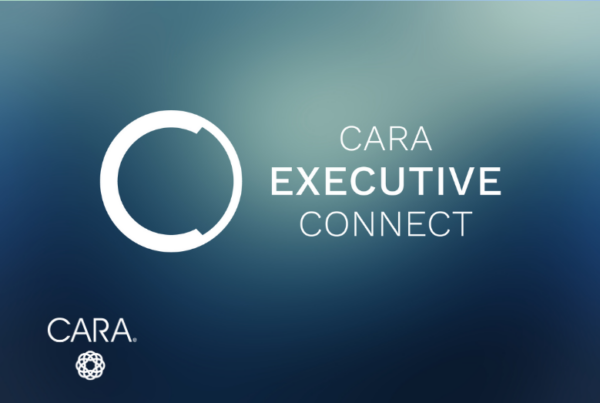
Generative AI is being adopted at an unprecedented rate. ChatGPT reached 100 million users in its first two months. And while individuals are embracing it for everything from resume writing to creating basketball brackets, the companies they work for have been more cautious. That’s about to change, as business leaders are realizing that upskilling employees to address the rise of AI in the workplace has to happen, and quickly. A 2023 report by the World Economic Forum revealed that more than 75% of companies are planning to adopt AI within the next five years with lofty goals of streamlined workflows, improvements in productivity, profitable growth, and increased engagement with customers and employees. They acknowledge that integrating AI into operations is critical to maintaining a competitive edge.
However, implementation of any new technology is only as successful as the ability of the workforce to adapt to the change. The workforce impact of AI will be fast, disruptive, and transformational. New jobs are being created, existing jobs are changing, and a few jobs are being replaced completely by technology. According to a report by Institute for the Future, 85% of jobs in 2030 have not been invented yet.
Talent Leaders on the Front Line of AI in the Workplace
Those who lead the employee experience are finding themselves facing questions such as: What technical and non-technical skills are essential for success in an AI-enabled future? How do we effectively train our workforce for AI-impacted roles? How can we motivate employees to acquire new competencies for AI? How can we drive a culture of data security with AI posing a major threat? How will we manage the change and ensure ROI?
Upskilling: Your AI Workforce Solution
Fortunately, there is an answer, grounded in the foundations of talent development: Upskilling your employees. A successful upskilling program for AI takes into consideration the organization’s AI strategy, the technical and non-technical skills needed to adopt it, and proven learning methodologies.
- Aligning Upskilling with Organizational AI Strategy: Ensure your upskilling efforts directly support your organization’s overall AI strategy by understanding how AI is being implemented across different teams.
- Targeting the Right Skills: Identify the specific skills and competencies employees need to succeed in their changing roles. What AI skills apply to the broadest audience (data security, prompt engineering, etc.)? Which uniquely human skills are going to have to be developed or enhanced (such as creativity, collaboration, adaptability)? Which technical skills will need to be developed (such as coding, requirements definition, or using data analysis tools such as those found within Excel/MS Copilot)?
- Designing Engaging Learning Journeys: Motivate and empower employees to embrace upskilling by creating personalized learning experiences that cater to their individual needs and learning styles.
- Creating a Measurement Strategy: Develop a method of measuring adoption. Track progress and demonstrate the impact of your upskilling efforts on key business metrics, ensuring a strong return on investment (ROI).
Let’s explore some of the most common AI challenges business leaders face and how these upskilling practices can be applied to address them.
AI Workplace Challenges and Solutions
Challenge: Clarifying Upskilling Efforts in a World of Rapid AI Change
The rapid development of AI can lead to scattered implementations and uneven employee skill development. Organizations might initiate one-off AI pilots or narrowly apply AI to specific processes. This creates a fragmented approach to upskilling, leaving those in charge of talent development unsure of what skills to focus on.
Solution: Align Upskilling with Your AI Strategy
Get your upskilling efforts on track by aligning them with your organization’s overall AI strategy. Here’s how:
- Understand the “Why” and “How” of AI Implementations: Connect with the teams working on AI projects. What are their goals? Is AI being used to automate tasks, improve security, or enhance customer service? Having clear objectives helps you identify the skills employees need to succeed.
- Focus on Broader Skills, Not Just Tools: When technology causes the need for upskilling, it’s tempting to focus on building skill in a specific tool. A strong upskilling program moves beyond tool training to include foundational knowledge of AI principles, the strategic goals behind its implementation, and how AI will impact the flow of work.
Challenge: Managing Change in Employee Roles with AI
AI implementation will change the nature of employees’ roles and responsibilities. This may cause resistance. Targeted upskilling efforts can ensure employees understand how AI affects their day-to-day tasks, the benefits of using it, as well as how to learn and adapt to new ways of working.
Solution: Target the Right Skills for Transformation
A skill building program that aligns to the individual learner’s needs can combat resistance to change and ensure new roles and responsibilities are more quickly adopted. Here’s how to pinpoint the critical competencies for success:
- Skills Gap Analysis: Assess your workforce’s current skills and identify the gaps between those and the skills needed for future roles.
- Mapping KPIs: Explore how changes to roles will impact individual KPIs. This helps tailor upskilling programs to address specific performance metrics.
- Personalized Learning Paths: Offer customized learning journeys for employees based on their roles, career goals, and skills gaps. Utilize learning management systems or other platforms to deliver these personalized experiences.
Challenge: Encouraging Employee Engagement with Upskilling for AI
Not all employees embrace upskilling. Encouraging employee buy-in and adoption of AI technologies by ensuring the learning experience is engaging.
Solution: Design Engaging Learning Journeys
Motivate employees to not just participate but actively embrace upskilling initiatives by creating captivating learning experiences. This involves:
- Define Learning Personas: By defining learning personas – detailed profiles representing different employee types with specific learning preferences and needs – you can design the upskilling experience for the persona.
- Develop Program Roadmaps: Develop curriculum roadmaps that clearly outline the learning content, activities, assessments, and instructional strategies. Tailor these roadmaps to individual needs based on learning personas, ensuring a focused and relevant journey for each employee.
- Utilize Engaging Formats: Engage your learners with a variety of learning formats. This could include instructor-led courses for in-depth discussions, virtual sessions for real-time collaboration, e-learning modules for self-paced learning, bite-sized microlearning resources for on-the-go learning, and engaging videos to illustrate complex concepts.
Challenge: Demonstrating the Value of Your Upskilling Efforts
Showcasing the value of upskilling initiatives creates stakeholder buy-in. It also provides valuable insights into what works/doesn’t to foster continuous improvement. But how to establish the return on investment for upskilling programs?
Solution: Create a Measurement Strategy
Track progress and demonstrate the impact of your upskilling efforts through a measurement strategy. Here’s how:
- Identify Key Metrics: Begin by identifying the key business metrics you intend to impact, such as employee engagement, turnover, performance improvement, productivity, and revenue growth.
- Track Individual and Organizational Impact:
- Individual Level: Track KPIs such as skill acquisition, performance improvement, and career growth as measured by performance evaluations, training completion rates, and skills assessments.
- Organizational Level: Monitor metrics such as customer satisfaction, new products/service launches, profitability, speed to market, and revenue growth.
- Continuous Monitoring: Ensure the effectiveness of your upskilling efforts by continually monitoring and measuring progress at both individual and organizational levels.
Benefits of upskilling for the rise of AI
There are many benefits that can be realized by aligning upskilling efforts with the organization’s AI strategy, focusing on the right skills, designing engaging learning journeys, and measuring the impact. Organizations that proactively prepare for the rise of AI:
Gain a competitive edge
Equipping employees with the essential skills to navigate the AI-driven workplace differentiates your company from competitors.
Enhance Employee Experience
Employees want the organizations they work for to invest in their success. An intentional upskilling program demonstrates commitment to learning and growth, keeping employees motivated and engaged.
Reduce costs
Replacing talent is expensive. The Society for Human Resource Management (SHRM) found the average That number doesn’t include other factors such as lost productivity and intellectual capital. Upskilling your current workforce reduces turnover costs and improves productivity.
Avoid Security Threats
While AI can be a transformational tool for efficiency and productivity, it also increases the data security threats. AI has enabled a proliferation of phishing and other fraudulent campaigns designed to take advantage of unsuspecting employees. Upskilling employees in data security will help ensure your organization does not fall prey to these attacks.
If you’re looking for a partner to help you strategically launch your upskilling plan, get in touch. We will work with you to create a customized AI upskilling program to realize these and other benefits!



